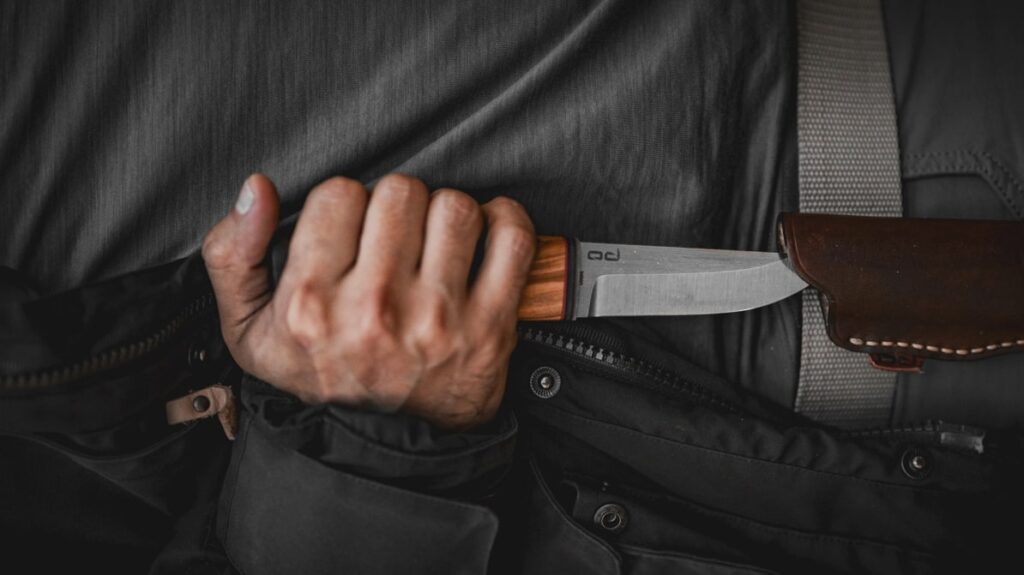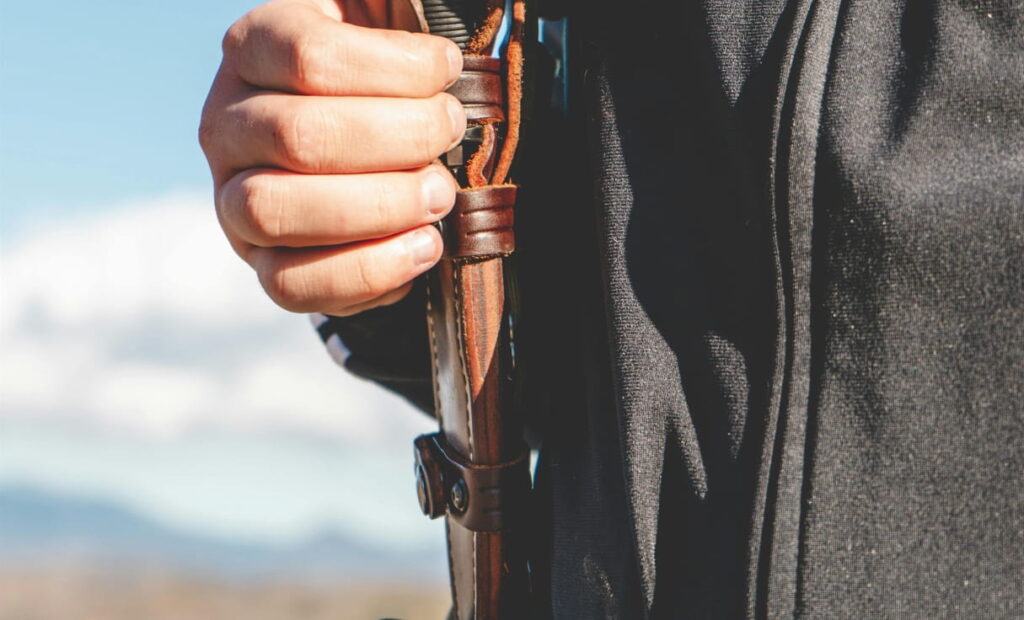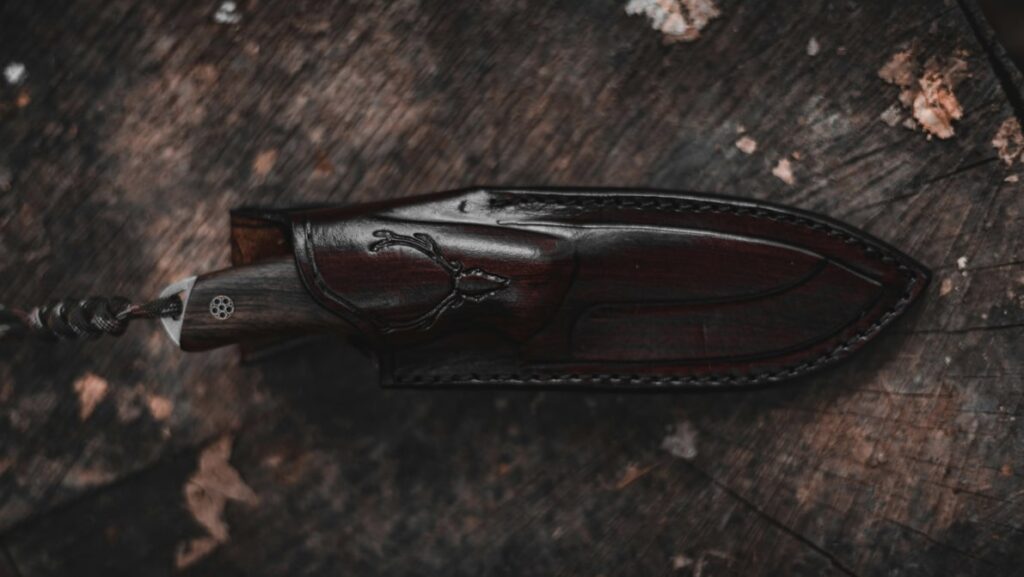Fixed-blade knives are reliable and always a huge help when you least expect it, especially outdoors. But the tricky thing about them compared to folding knives is that it’s really inconvenient to carry them around. I mean, you can’t just tuck them inside your pocket; they’ll poke a hole in your jacket.
Carrying a fixed blade knife that grants you quick and reliable access to the blade for work, outdoor activities, or self-defense is also important. Different carrying methods suit different situations. For everyday use, a simple belt carry might suffice, offering easy access and a secure fit. For those who prefer discretion or require hands-free carry, options like inside-the-waistband or neck carry might be more suitable. Each method has its advantages and specifics in how it positions the knife on your body, affecting both its visibility and ease of draw.
Learn about each carrying method in the following article and see which method sounds best for your style.
Understanding fixed blade knives
Before you start carrying one, it’s important to get acquainted with the different types of fixed-blade knives. These knives are designed for various tasks, from survival to everyday use, and they come in different sizes and unique designs. Each type has preferred carrying methods.
- Hunting knives: Designed to be versatile tools in the wilderness, these knives often feature full-tang construction. Meaning the knife blade extends through the handle, providing strength and reliability. Hunting knives typically include features like a serrated edge for cutting through rope or thick foliage. By definition, hunting knives are usually on the larger side, so carrying methods should accommodate their size.
- Tactical knives: Tactical knives can come in both fixed blade and folding designs. Tactical fixed blade knives are specifically designed for self-defense and combat situations. They often feature a sharp, pointed blade optimized for piercing and a handle designed for a secure grip. It’s absolutely paramount to cover the tip and edge of tactical knives, even more so than with other fixed blade knives.
- Bushcraft knives: Bushcraft knives are crafted for wood carving, food preparation, and other outdoor activities. They typically feature a robust, straight-edged blade and a comfortable handle, enabling precision and endurance in a variety of tasks.
Start Working with a Professional Now
Carrying fixed blade knife around the belt

Carrying a fixed blade knife around your belt is a common and practical method for keeping your blade both accessible and secure. It is ideal for quick access and if you are someone who uses a knife frequently throughout the day, this carrying style can be quite efficient.
- Standard belt carry: Attach the sheath vertically to your belt. This is the most traditional method and allows for the knife to slide down into the sheath. Gravity assists with retention, minimizing the concern about the knife slipping out.
- Scout carry: Position the sheath horizontally along the lower back part of the belt. This carry is less noticeable and can be more comfortable when you’re sitting or moving around.
- Tip-Up: In this method, the knife is positioned within the sheath so that the blade tip points upward. This orientation allows for quick and easy access to the knife when drawing it from the sheath. It’s particularly favored by those who prioritize fast deployment of their knife in various situations.
When setting up your knife for belt carry, ensure that the sheath is securely fastened to your belt and that retention is sufficient to prevent the knife from falling out during daily activities. Additionally, always ensure that the knife handle is positioned so that you can draw and re-sheathe it safely and easily.
Carrying fixed blade IWB
Carrying a fixed blade knife Inside-the-Waistband (IWB) involves positioning the knife and sheath between the body and the waistband of the pants or shorts.
This method typically utilizes a specialized sheath with clips or loops designed to attach securely to the waistband. One advantage of IWB carry is its discreet nature, as the knife remains concealed beneath clothing. Making it suitable for everyday carry in various environments.
Additionally, IWB carry offers easy access to the knife, allowing for quick deployment when needed. However, carrying a fixed blade knife IWB may be less comfortable than other methods, particularly for individuals with sensitive skin or when sitting for extended periods. Furthermore, the size and weight of the knife may affect the overall comfort and concealability of IWB carry. Overall, IWB carry provides a practical and discreet option for concealed carry of fixed blade knives, ideal for those who prioritize concealment and accessibility in their everyday carry setup.
Carrying fixed blade knife off-body
When carrying a fixed blade knife off-body, it’s essential to prioritize accessibility and safety. Here are options you can consider:
- Backpacks: Storing your knife within a backpack keeps it secure while providing easy access. Ensure your knife is sheathed and possibly add an additional retention device like Velcro straps or a snap closure to avoid unwanted movement.
- Container or case: A robust case, preferably lockable, can transport your knife without drawing attention. Choose a case with padding to prevent unnecessary wear.
- Vehicle storage: Utilize a dedicated compartment or a mount in your vehicle. Check your local laws to ensure compliance.
While carrying your knife off-body can be convenient for transportation, it may not be the quickest option for immediate use. Always follow safety guidelines and local regulations when transporting your fixed blade knife off-body.
Carrying fixed blade knife around the leg

Carrying a fixed blade knife around the leg or boot offers a discreet and convenient option for those who require hands-free access to their knife. Leg carry typically involves securing the knife and sheath to the thigh using straps or a specialized holster, while boot carry involves concealing the knife within or attached to the boot itself.
One advantage of leg or boot carry is that it keeps the knife easily accessible, especially in situations where reaching for a belt or waistband may be impractical. Additionally, it provides a secure and stable location for the knife, minimizing the risk of loss or theft.
However, leg or boot carry may also be less comfortable than other carrying methods, particularly during prolonged periods of wear or when engaging in vigorous activities. Furthermore, accessing the knife may require additional time and effort compared to other carry positions. Overall, leg or boot carry offers a practical solution for individuals who prioritize accessibility and discretion in their knife-carrying setup.
Carrying fixed blade knife around the neck
Carrying a fixed blade around the neck requires a string, harness, or strap in addition to a sheath. It is a methods often employed for convenience and quick accessibility. You’ll use a sheath attached to a lanyard hole or neck chain, designed to rest the knife handle downwards or horizontally under your shirt.
Steps for neck carry:
- Choose a knife with a secure sheath.
- Attach the sheath to a breakaway neck chain or paracord to enhance safety.
- Adjust the length so the knife sits at a comfortable position on your chest.
- Ensure the knife handle is positioned for a swift draw.
Safety tips:
- Always opt for a sheath with good retention to prevent the knife from falling out.
- Use a breakaway chain to prevent potential strangulation hazards.
- Be aware of local laws regarding the concealment of weapons.
Types of sheaths
When considering how to carry a fixed blade knife, the choice of sheath is vital for both accessibility and safety. Your selection will depend on factors such as the knife’s size, intended use, and the environments in which you’ll be carrying it.
Leather sheath

Traditional and aesthetic, leather sheaths are favored by many for their classic look and feel. Over time, the leather can mold to the shape of your knife and your body. Leather works well for hunters and campers due to its natural integration with outdoor gear.
Leather sheaths are generally made for a specific carrying style. They have multiple grades, and from leather grain to tanning methods, there are various aspects to consider. However, there are also low-end bonded leather options scattered around the market. Be careful to select a trustworthy supplier for your leather.
Synthetic materials
Materials such as Kydex, nylon, and polymer blends are commonly used in the production of synthetic sheaths. Kydex, a thermoplastic material, is lightweight, waterproof, and resistant to chemicals and extreme temperatures, making it ideal for outdoor use. Nylon sheaths are known for their flexibility, abrasion resistance, and ease of maintenance. They often feature adjustable straps and additional pockets for accessories. Polymer blends combine various synthetic materials to create sheaths with enhanced strength and durability. Overall, synthetic sheath materials offer practical and reliable options for carrying and protecting your knife in various environments.
Legality and regulations
When you choose to carry a fixed blade knife, it’s essential to familiarize yourself with the specific laws and regulations that apply to your locality. Laws can vary widely, both between different states and within individual cities.
Carrying laws in various jurisdictions
Carrying a fixed blade knife is subject to state and local legislation, and restrictions often include blade length limits and whether the knife is concealed or openly carried. For instance, in Los Angeles, you’re limited to an open carry blade length of 3 inches, which is more restrictive than some other regions. Always check your state’s laws and any additional local ordinances to ensure compliance.
- Blade length: Legislation may impose maximum blade length for open carry; exceeds this, and you could face penalties.
- Open vs. concealed carry: Some jurisdictions allow open carry of larger knives, but have stricter rules for concealed carry.
Start Working with a Professional Now
Conceiled carry regulations
The legality around concealed carry of fixed blade knives also differs significantly by jurisdiction. Some states allow concealed carry of any knife if you don’t have intent to use it unlawfully, while others have stringent restrictions on the type, size, and features of knives permitted. Law enforcement agencies are key enforcers of these regulations, so acting within the boundary of the law is crucial to avoid legal trouble.
- Intent: Your intent for carrying may factor into legality; carrying without the intent to use unlawfully is permissible in some places.
- Types of knives: Certain knives may be classified differently; for example, switchblades and gravity knives are generally regulated more strictly.
If you’re unsure about the regulations, consulting with law enforcement or a legal advisor in your area can provide clarity on knife carry laws.
Exploring the potential of fixed blade knives
Fixed blade knives are fantastic tools with a wide range of uses, making them highly sought after in a large market. Including carrying attachments and accessories allow knife enthusiasts to personalize and optimize their tools for their specific purposes. Whether it’s a custom sheath for comfortable and secure carry or specialized attachments for added functionality, the possibilities are endless.
If you’re passionate about knives and want to venture into designing and manufacturing your own, Kegani is here to help. As an OEM knife factory with extensive experience and a global customer base, we have the expertise and resources to bring your vision to life. Contact us today to explore our catalog.

